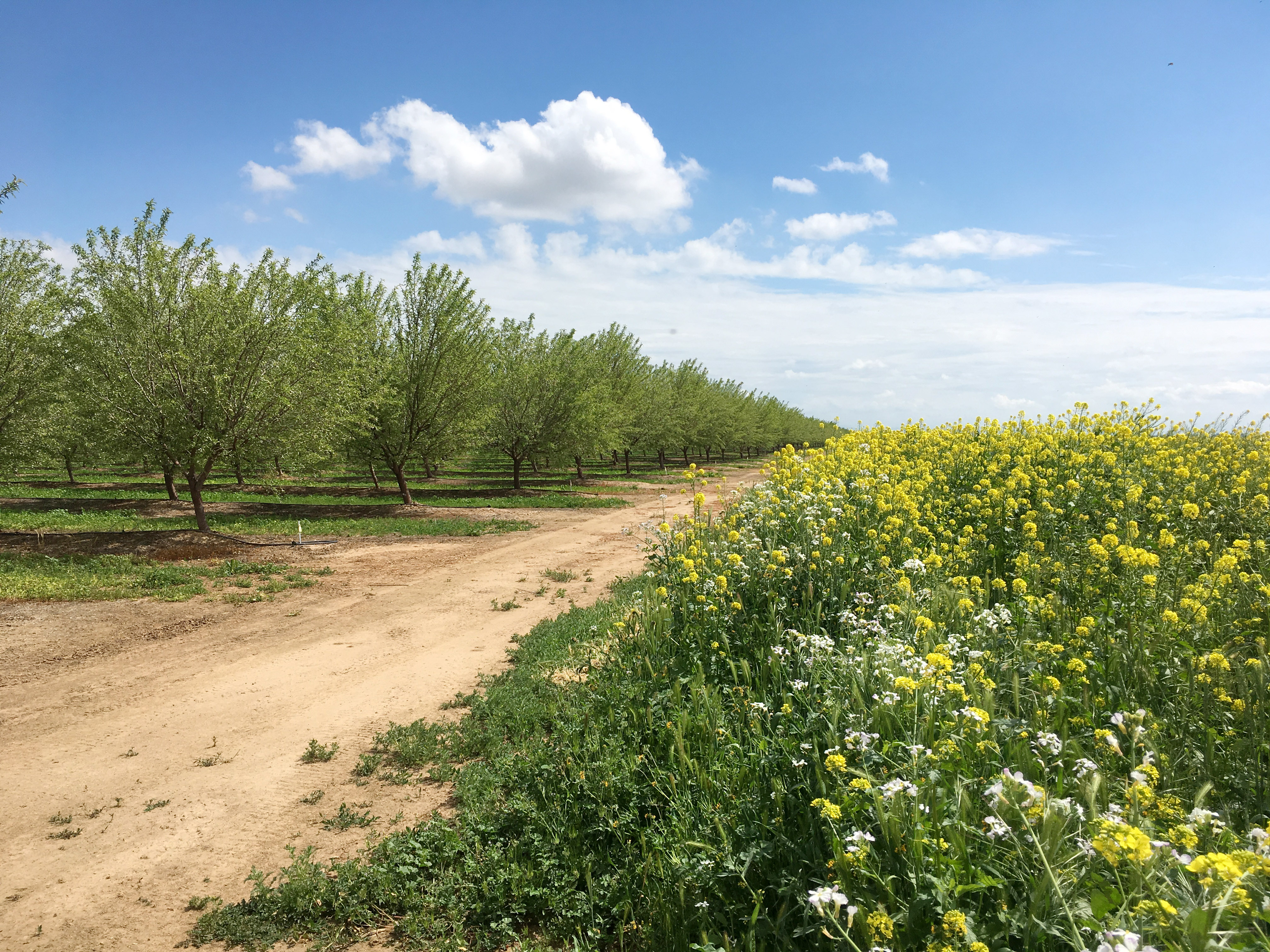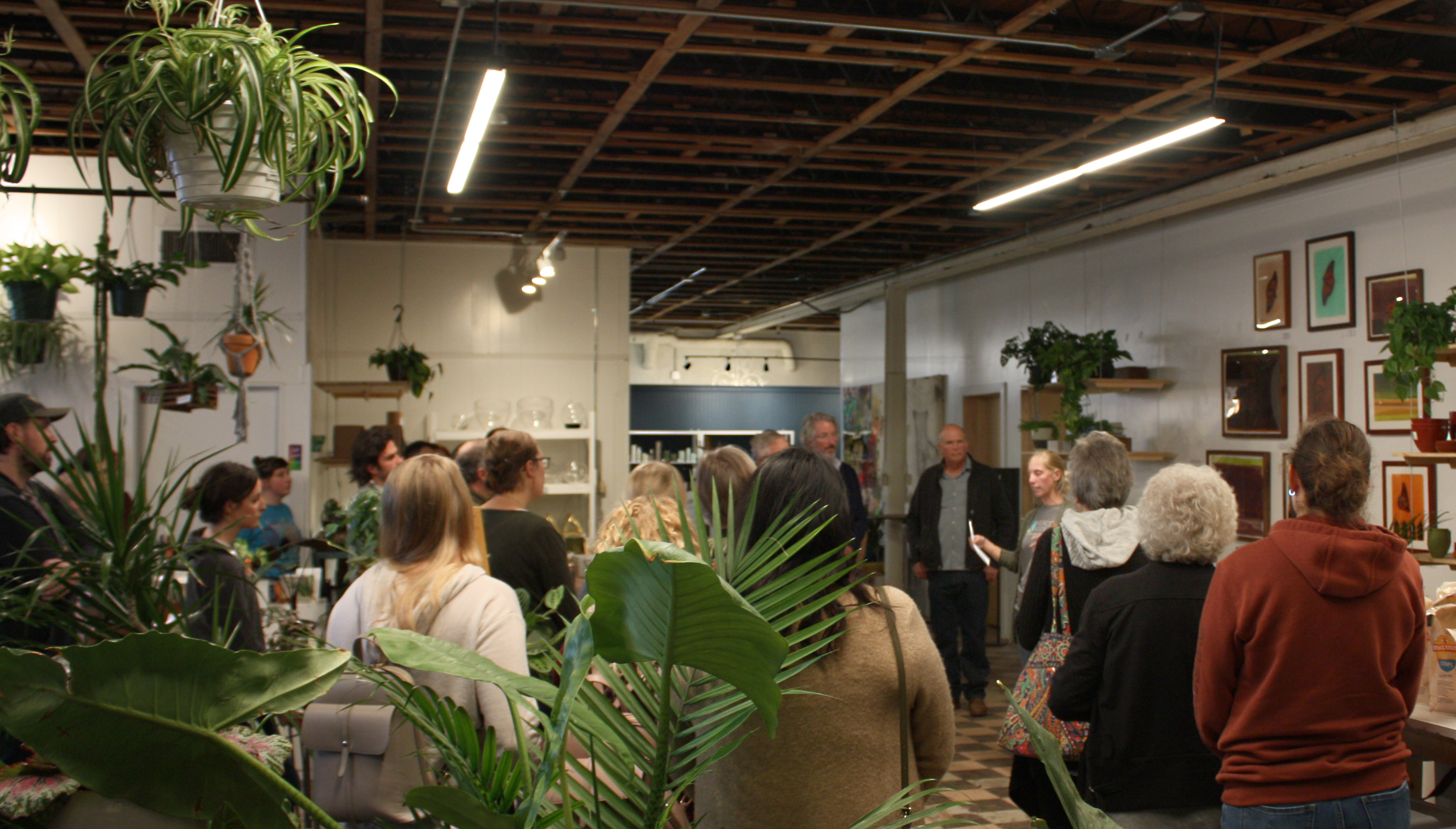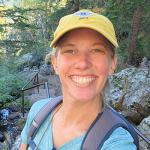Select monthly updates from our team of restoration ecologists, entomologists, plant ecologists, and researchers.
The Xerces Society manages the largest pollinator conservation program in the world. We work with farmers, gardeners, land managers, agency staff, and others to create habitat for bees, butterflies, and beneficial insects—and hundreds of thousands of acres of flower-rich habitat have been planted. We also offer certifications: Bee Better Certification for farmers and food companies who are committed to supporting pollinator conservation in agricultural lands, and Bee City USA and Bee Campus USA certifications for cities and colleges dedicated to making the world safer for pollinators.
With staff based in more than a dozen states, and offering a diverse array of expertise, it can be challenging to summarize the impactful work being done by our team of restoration ecologists, entomologists, plant ecologists, and researchers. Therefore, we have compiled select pollinator conservation program updates into monthly digests. October's featured staff members recently attended a carbon farm planning training in California, and spoke at an event that paired art and conservation in Iowa.
Combining Carbon Farming and Insect-Friendly Agricultural Practices
Kathryn Prince, Farm Bill Pollinator Conservation Planner, California
I recently traveled to Los Banos, California, to attend a carbon farm planning training put on by the Carbon Cycle Institute and some of our local Resource Conservation Districts.
Since the onset of agriculture thousands of years ago, atmospheric carbon has been gradually increasing—and in the last hundred years, it has increased rapidly. Frequent soil disturbances such as tilling have depleted the carbon in our soils, releasing it into the air.
Carbon farming is a concept that has slowly been taking root as a way to combat climate change using agricultural practices. The concept is simple: We can put this carbon back again by keeping our soils healthy. Some California farmers have already begun implementing carbon farming plans—which were discussed at the carbon farm planning training I attended.
It quickly became apparent to me that carbon farming efforts also contribute improved habitat for invertebrates. After all, our soils are full of creatures that consume carbon and turn it into energy. Countless bacteria live below the soil surface, munching on decaying matter. Fungi spread and interconnect underground, establishing a vast network that plant roots can tap into. And many invertebrates spend part, if not all, of their lives in the soil—including beneficial insects like beetles and bees.
So how can we sequester carbon and provide insect habitat in farmland? Many small, actionable steps provide multiple benefits—and taken together, they can have a big impact. For example, keeping a few permanent habitat features like perennial vegetation will lock up carbon and simultaneously provide habitat for invertebrates. Minimizing soil disturbance will both keep soil healthy and protect the homes of invertebrates that live underground. Rotating livestock will prevent them from foraging continuously on a single patch of land, which would diminish both its carbon-capturing power and its value as insect habitat. Using cover crops enriches the soil even when the harvestable crop is not growing, and also provides cover and forage for invertebrates. Adding compost and mulch can help soil in dry places like California hold onto water longer, which in turn makes the soil more habitable for life.
Over the next year, the Xerces Society expects to develop more guidelines on soil health for the promotion of biodiversity. In the meantime, please check out our guidelines, Cover Cropping for Pollinators and Beneficial Insects.
[Editor's note: The soil health guidelines, Farming with Soil Life, were released in April 2021.]

Reaching a New Audience in Des Moines, Iowa
Sarah Nizzi, Farm Bill Pollinator Conservation Planner and NRCS Partner Biologist, Iowa
I have spent the last five months traveling around Iowa (plus a stop in Illinois) to lead or co-lead 23 outreach events. These included training in plant and pollinator identification, bumble bee workshops, on-farm habitat field days, and numerous public speaking engagements. Needless to say, the summer flew by! My last and final event for the busy season turned out to be a very pleasant surprise, incorporating my two favorite subjects: Nature and art.
When I was asked to give a monarch talk at an art opening at a houseplant store called Art Terrarium in downtown Des Moines, Iowa, I was not only flattered, but also a bit surprised. Although the featured art was focused on monarchs, the Art Terrarium is primarily centered on houseplants, plant accessories, and art events. Their clientele obviously has an interest in plants, but they have had less of an emphasis on native species. The event had 40 attendees—of which, only three had heard of the Xerces Society previously. The thought of speaking to fresh ears heightened my excitement!
All in all, the event went amazingly well! I presented an overview of monarch conservation and advocated for other native pollinators and plants. Following my talk, Ben Anderson, a Rhode Island-based artist whose featured series "Migration" highlights the plight of monarch butterflies, spoke about his inspiration and techniques. In addition to the great turnout, I also had profound conversations with multiple attendees—which was quite refreshing and inspiring. Although many attendees had little knowledge of native plants and pollinators, their questions were extremely thoughtful and purposeful. Their interest in learning and doing more was evident, and by the event’s end, I felt I had helped plant a seed in each and every one of the audience members.

Further Reading
Read more about climate change mitigation strategies on our blog.
Learn more about the Xerces Society's monarch conservation work.
Learn more about the Xerces Society’s Pollinator Conservation Program.





